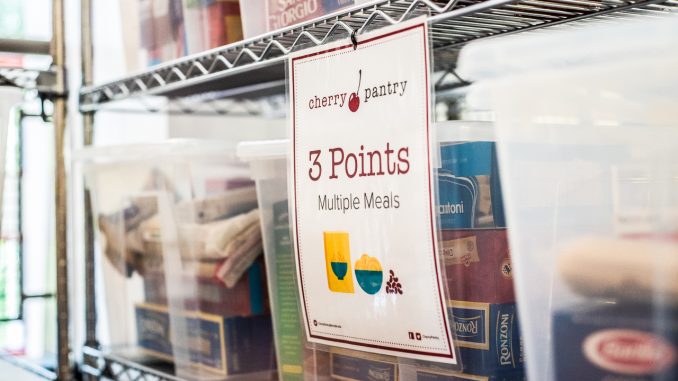
Comments about food insecurity being just another part of “the college struggle” annoy Cherry Pantry Director Michelle Martin.
“This opinion rests on an ignorance of the costs of chronic or even acute food insecurity, which is a barrier to student success,” Martin said. “We want to give students as many tools to succeed as they need that are within our disposal.”
The Cherry Pantry launched in February 2018 as a response to food insecurity, or the lack of consistent and nutritious meals, experienced by more than one-third of college students in the United States, according to a report released in April by the Wisconsin HOPE Lab at the University of Wisconsin, Madison. Temple University’s Cherry Pantry is one of more than 600 food pantries in colleges across the country.
The Cherry Pantry’s shelves in Room 224A of the Student Center will soon be stocked with more than just food in hopes of helping students beyond the plight of food insecurity.
Starting Sept. 18, the pantry will offer personal hygiene items like shampoo, deodorant, soap, toothpaste and feminine hygiene products to students for free.
The pantry’s expanded inventory in part results from donations by Temple’s Give + Go Green program in the Office of Sustainability. To combat the increase in waste as Temple students move off campus, Give + Go Green collects everything from electronics to kitchen items to non-upholstered furniture.
Last year, Give + Go Green raised $1,100 for Hurricane Matthew relief efforts in Haiti. This year, the initiative will supply these resources directly to the Temple community through partnerships with organizations like the Cherry Pantry.
Alexis Culp, a student worker in the Cherry Pantry, said the idea for expansion comes partly from West Chester University’s Resource Pantry model, which stocks a variety of personal care essentials.
“At West Chester they offer professional attire like blazers and dress pants if you have a job interview coming up,” Culp said. “If you’re facing food insecurity, you might be struggling in other areas too.”
The Cherry Pantry’s growth this year goes beyond new items on the shelves. The leadership structure is also undergoing change.
Culp said the pantry is moving toward students being more in charge of organizing themselves and creating programming for the pantry. The pantry jumped from having one student manager in the spring to two – Culp and Zoee Webster, another student worker at the pantry. Graduate social work intern Samantha Horn will offer further student support to the pantry.
Additionally, the Cherry Pantry is looking to create an even more engaging experience — it’ll now help students do their grocery shopping.
“Our volunteers will help students put together nutritious meals that will last the week,” Culp said.
At Temple, a report during the 2017-18 academic year found that 35 percent of students experience food insecurity, which can be exacerbated by the lengthy process of securing government aid, like cash assistance or food stamps.
Logan Murray, a senior visual studies major, said access to essential resources should be as common as “water fountains,” and the cost of basic needs can add up quickly.
“A can of beans costs money,” he said. “I think [nutrition] should at least be government funded.”
Martin said many students do not qualify for government assistance at all. And of the students who are eligible, roughly 80 percent don’t receive their benefits.
“The Cherry Pantry reduces barriers to access and reaches those students who are not eligible for government assistance,” Martin said.
She added she feels the pantry’s central location on campus, as well as support from the Temple community, has helped reduce the stigma associated with needing assistance.
“We strive to make the pantry experience comfortable and welcoming to students who visit,” Martin said.
Any student with a student ID can visit the pantry once a week and shop the inventory of non-perishable foods. Students select items based on a point system.
Side dishes and snacks like canned vegetables and drinks “cost” one point, single-meal items like ramen packets and soup cans are two points and multi-meal items like cereal boxes and boxes of rice or pasta are three points. Sixteen points complete a shopping bag.
For Martin, the pantry is successful in making students think about food insecurity and helping students who face the struggle.
“There is a level of awareness within the community that was not there before,” Martin said.
Now, student organizers are looking to grow the Cherry Pantry through partnerships with local businesses, greater outreach to commuter students and strengthening its social media presence.
“The next step is not only to maintain that support, but to deepen the awareness so that more university partners can become involved and more students in need can utilize the pantry when necessary,” Martin said.


Be the first to comment